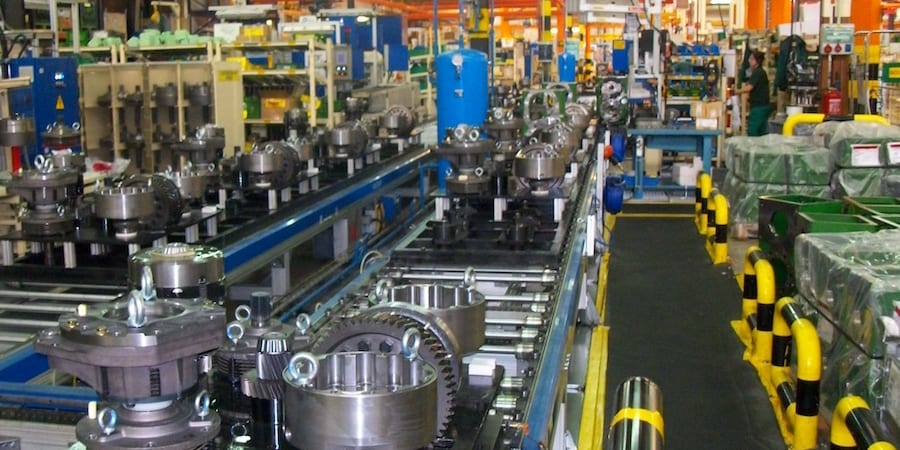
The five modes of a sensei
FEATURE – Variety in sensei approaches can cause a lot of confusion. The author sheds light on the subject by describing a sensei’s five modes of interacting with individuals and teams.
Words: Dan Prock
A sensei is neither a trainer, a coach, nor a consultant. A sensei is an interventionist, a teacher who evokes greater consciousness about a business process in both managers and employees. As a teacher, there is great variety in every individual sensei’s approach. This brief article will describe the five modes of behavior that a lean sensei uses to engage people and transmit process improvement knowledge. These modes may fit different situations or stages of continuous improvement and can explain some of the variability that causes confusion among observers.
REAL PLACE
In our culture, most of us at work tend to live in our heads a lot of the time. The consistent approach of a sensei is to get out of the academic mode and distant discussions in conference rooms and move into learning by doing at the gemba – the “real place”. This usually starts by focusing on the data and mapping the technical processes of work.
STOP
The first mode of the sensei is a parental mode, that is, to stop staff from doing something hazardous or seriously dysfunctional by calling it out. This is a “power move” that can shock recipients into immediate change. A rule-based example of the sensei’s “stop protocol” is the “stop the production line” mandate. It could be in response to something that’s physically dangerous, like breaking a safety rule, or a defect in quality or process standardization, like skipping steps to speed things up or doing design work or financial calculations outside a company’s safe systems. A powerful time to act on this mandate is immediately upon the start of an engagement or event. For example, an early story at Wiremold has been recounted by Art Byrne. On an initial plant tour, the Japanese consultant stopped a few steps in, returned everyone to the conference room, and wrote on a white board, “Everything here is bad”. He then asked, “Are you ready to change it?” The stop mode can at times be applied to a manager’s behavior. For instance, I once confronted a business owner (during a break) who had just been berating his staff for their inability to get results. I said, “If you want them to be better, show them respect and ask good questions.” The owner did change his behavior, at least during that event. (Note that a variation on “stop” can be “pause”, which is to slow down a rush to a solution or action.)
CONSCIOUSNESS RAISING
The second mode of the sensei is to be sensitive and see things staff don’t notice or take for granted, without immediately trying to change them (some of these observations can come into play later). Employees have often worked so long in a company that they no longer see the waste, notice anomalies, or even ask questions. This is an all-purpose mode, one appropriate for every stage during a continuous improvement engagement. A rule-based method of implementing this mode is the famous “stand in the circle” exercise of sensei Taiichi Ohno. By standing in place for minutes or hours and just observing, the mind slows down, perceives more, puts together the logic of steps and, after a time, sees and asks questions that may identify a problem or clarify a process waste. This means to adopt a mindful state at the gemba and lead with questions. The goal is to develop a kaizen mind, which is mindfulness married to creativity, in others. Author Masaaki Imai used to say, “Kaizen is like the measles; you get it through personal contact.” Once kaizen mind is demonstrated by informal leaders, others will buy in and continue using it on their own. For example, after a kaizen event, an employee in a neighboring line built a metal shelf beside his line on his own so that his quality control instruments were a visual reminder and ready for use.
CHALLENGE
The third mode of the sensei is to consciously challenge the status quo and operating models with questions, data or knowledge from the employees’ direct experience in their own work process. Challenge can result in better technical methods, innovations in product design, synchronization of production work or project work through updates and confronting “gaps” in deliverables, schedule, or information. In this mode, staff can be mandated to employ analysis tools like takt time-cycle time analysis, kanban systems, social tools like obeya meetings and value stream mapping events, or the coaching kata, and frequently reflect on progress and obstacles, all with the aim of evoking the kaizen mind.
PROMOTE CREATIVE THINKING
The fourth mode of the sensei is stimulating creativity and challenging staff’s operating models and habits. This includes visioning, questioning assumptions about what’s possible and challenging staff’s operating models and habits. The aim is to provide a shock, especially to managers, in order to get them to think “outside the box”. In process improvement events, for example, I often challenge managers and teams to come up with both a “better” and a “radical” process redesign, then have them combine the best parts of each, implement quick wins, and seek permission from higher-ups to set up experiments for big changes.
DISCOVER SYNCHRONICITY
The fifth mode of the sensei is the most challenging and the most fun, at least for me. It is to enter into a little-understood problem with many unknowns to open an event to the risk of failure, and trust in the discovery of synchronicity. To do so, I have learned to stay present and find flow with people, even as issues and conflicts arise. A teacher role models leading in this new way, that is, to trust that collective consciousness will win out, as it most often does. But, as they say in acting class, you have to commit! Role modeling can open others to respond in kind, and the result can be a synchronicity of thinking that ends with a surprising solution or a set of new steps – things no one could have anticipated earlier. The discovery experience evokes the kaizen mind in those involved.
***
What's the value of discerning the sensei's five modes? When we learn them, we become not sensei, but change leaders ourselves.
THE AUTHOR

Read more



INTERVIEW – For the past year, agricultural equipment manufacturer John Deere Ibérica has worked to spread lean thinking to the supply chain. We met with them in Madrid to understand how they’re going about it.


FEATURE – In the latest article of his series for Planet Lean, Ian Glenday explains the practical steps an organization can take to properly introduce levelled production in its operations.


CASE STUDY – The story of this NGO shows how visualizing the work enables improvement and removes barriers among teams. It is a first, fundamental step towards a lean transformation.


INTERVIEW – A specialist in control solutions for air-conditioning, refrigeration and heating, Carel Industries first applied lean to R&D a decade ago, when few companies did. We asked them how their journey unfolded.
Read more


FEATURE – Lean coaching is all the rage these days, but to what end? The author reframes the role of a sensei as an expert in achieving productivity by engaging everyone in kaizen.


FEATURE – Why do lean transformations benefit from the support of a sensei? Michael Ballé discusses how we typically need help to take the emotions out of the work and go down uncomfortable paths.


RESEARCH - For most CEOs, working with a sensei is common practice. Yet, many questions remain on this role. This paper aims to bring clarity to the "sensei mystery".


FEATURE – The author discusses how the hoshin kanri process, coupled with effective coaching, helps us to tackle the challenges inherent to implementing change.

